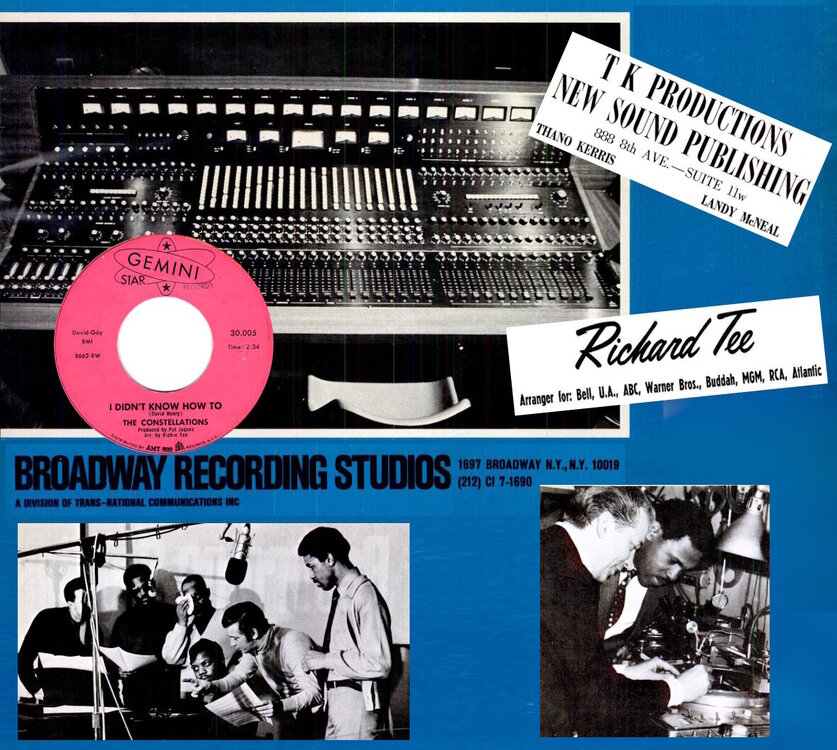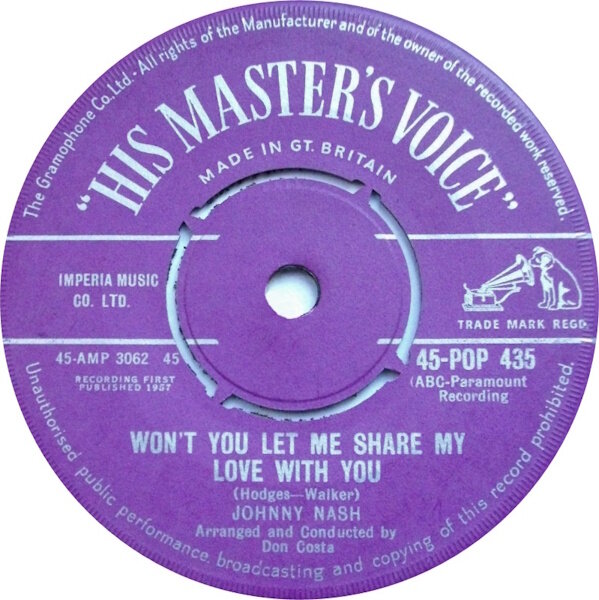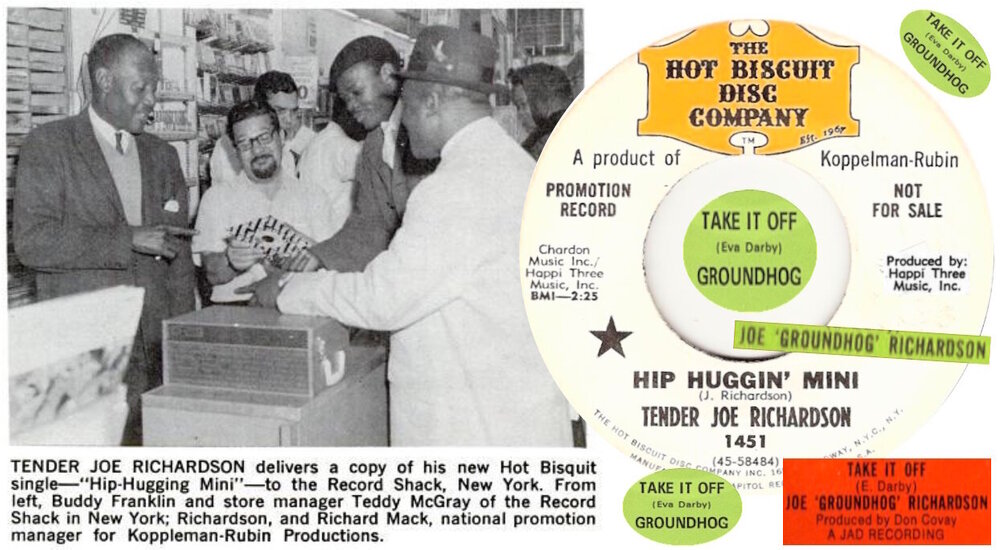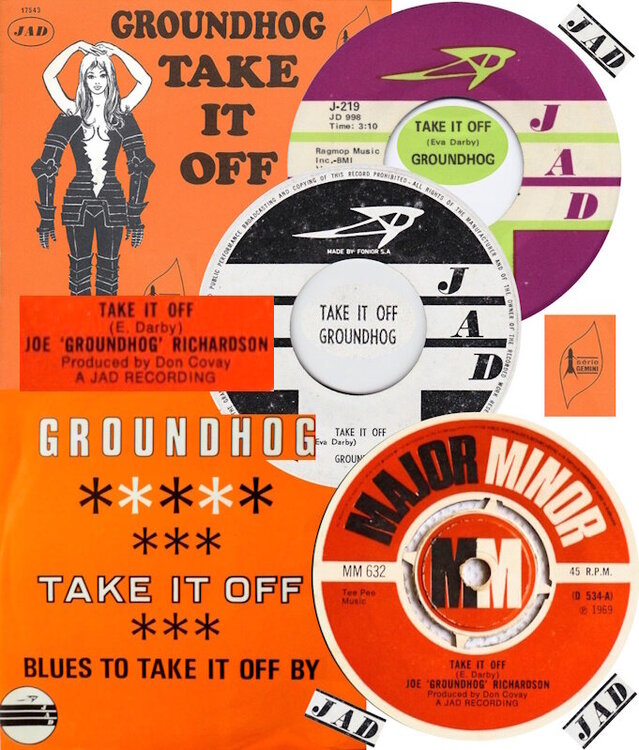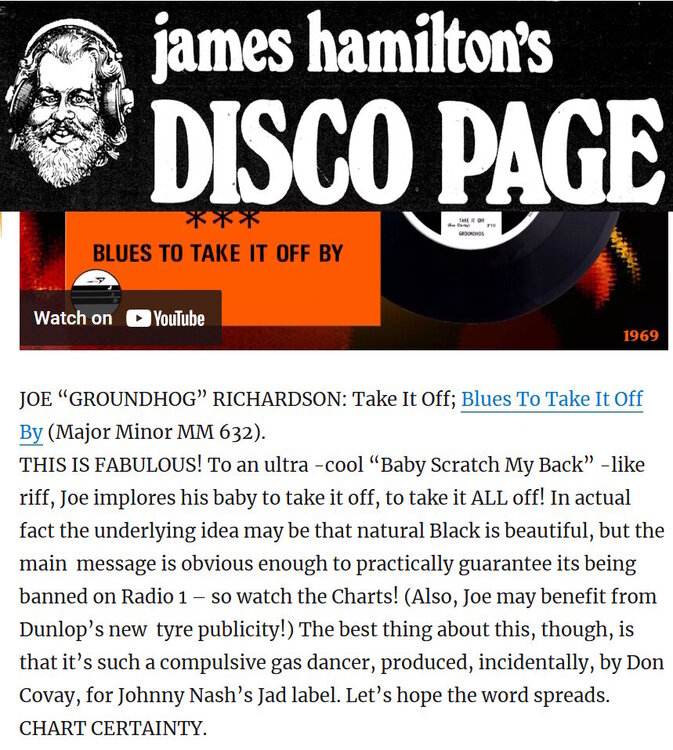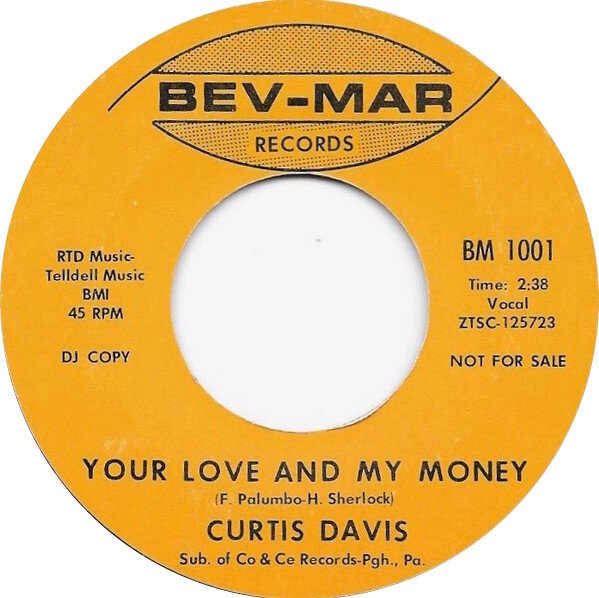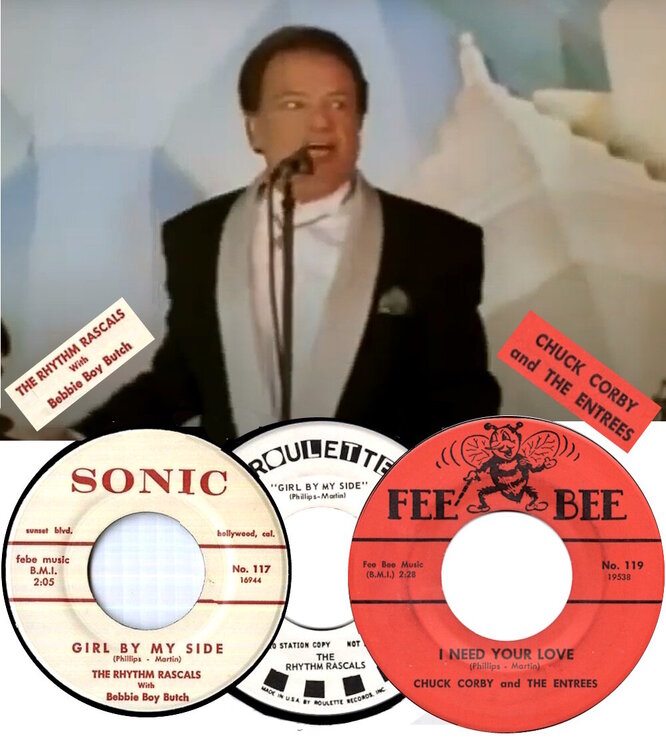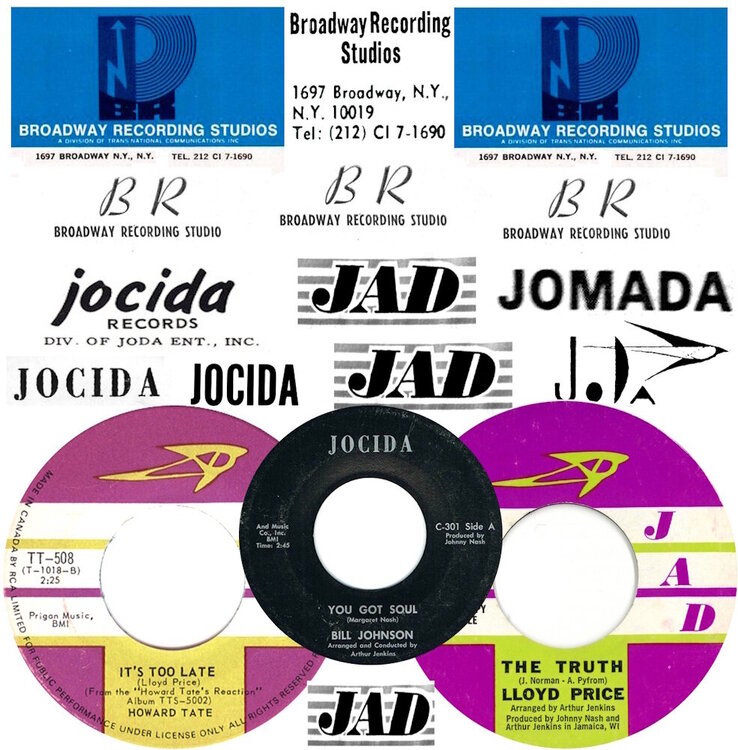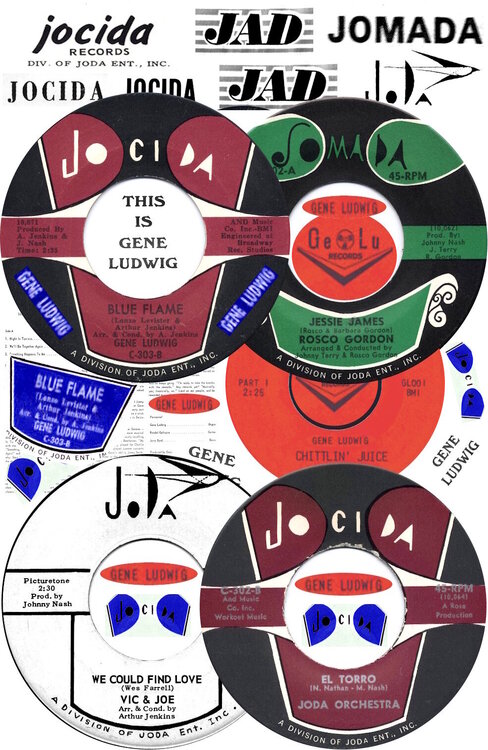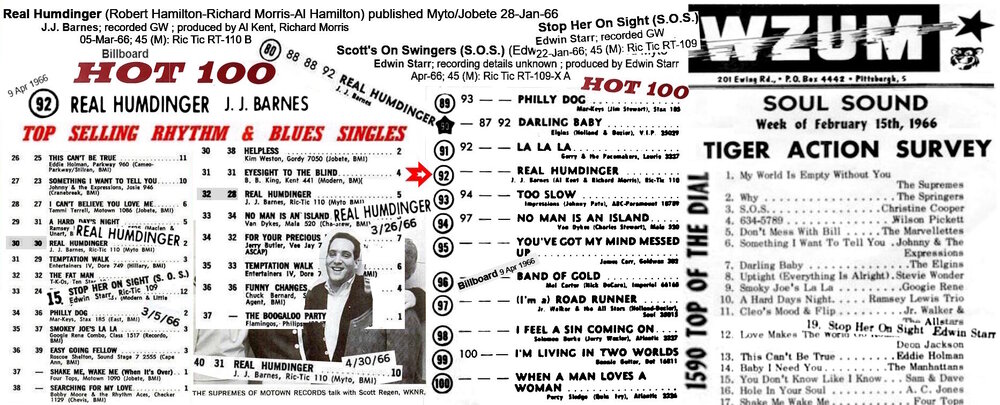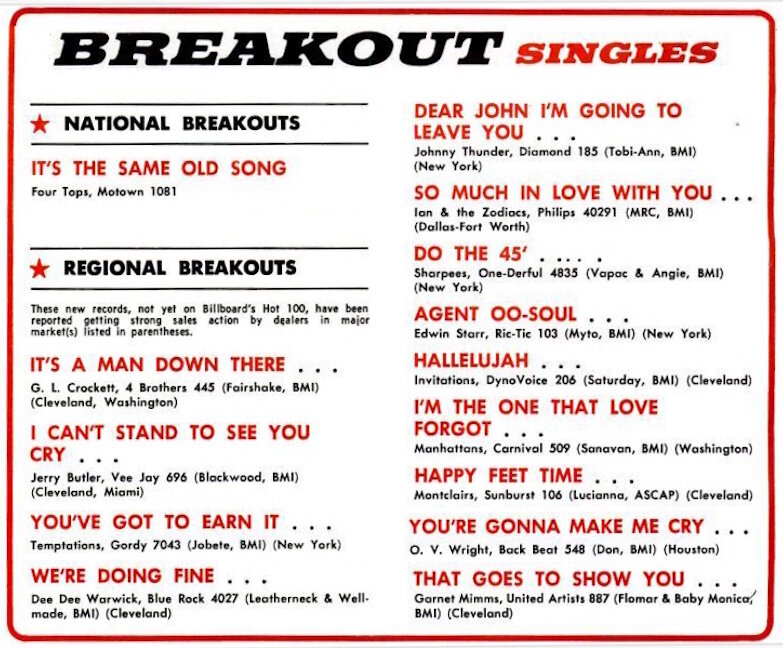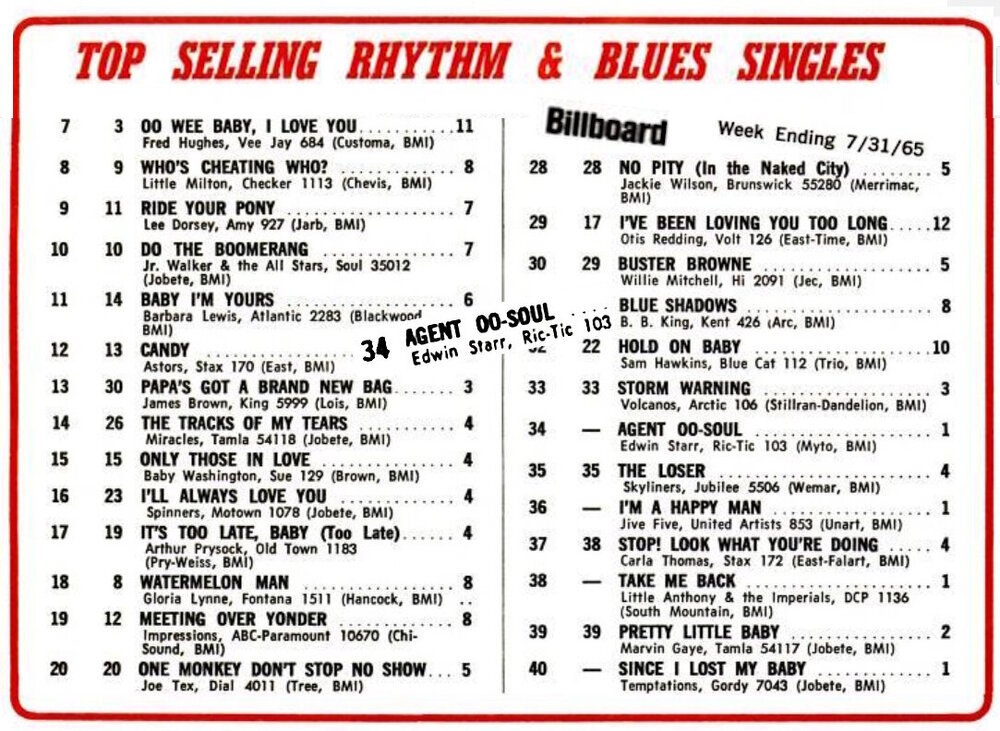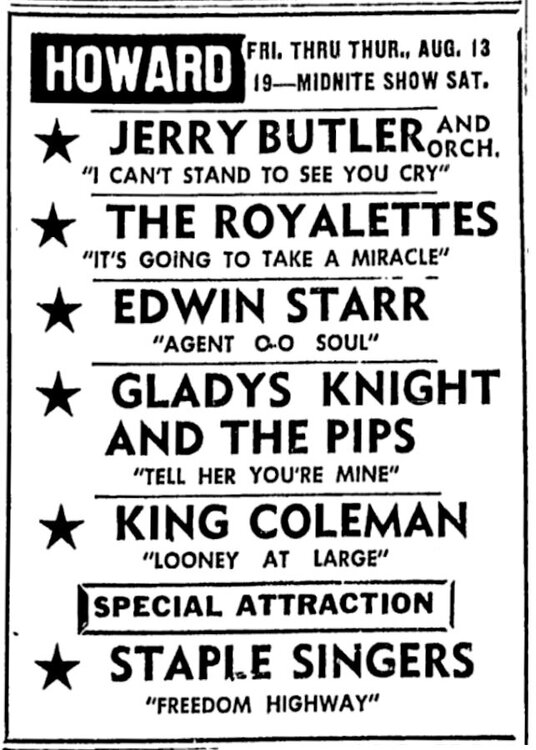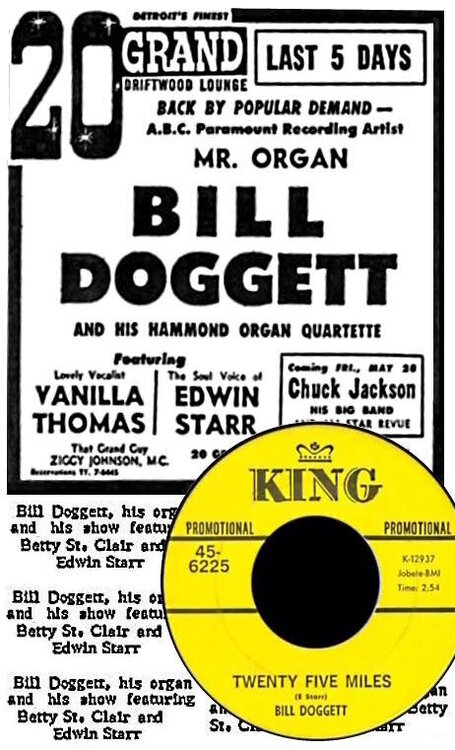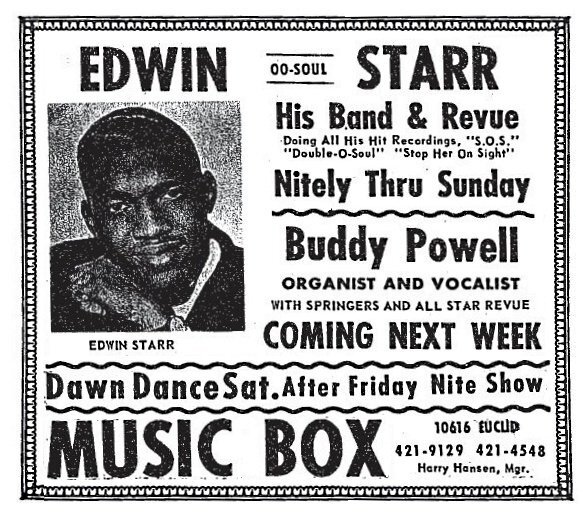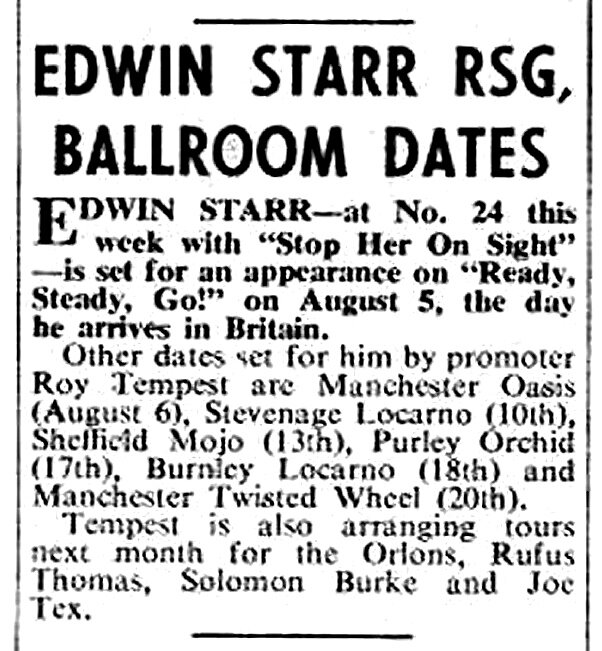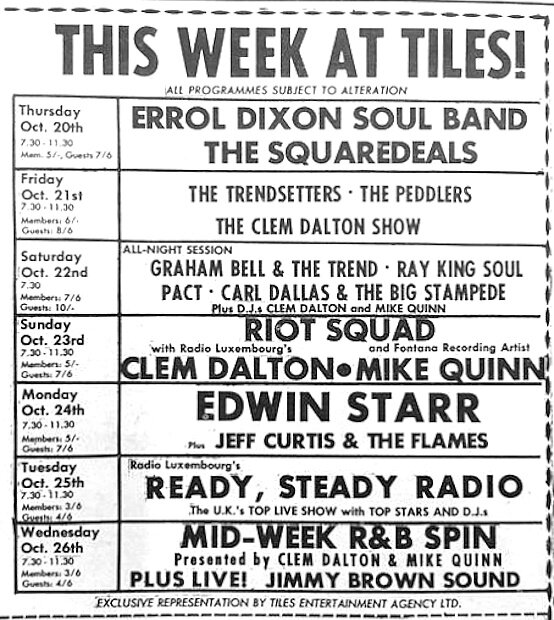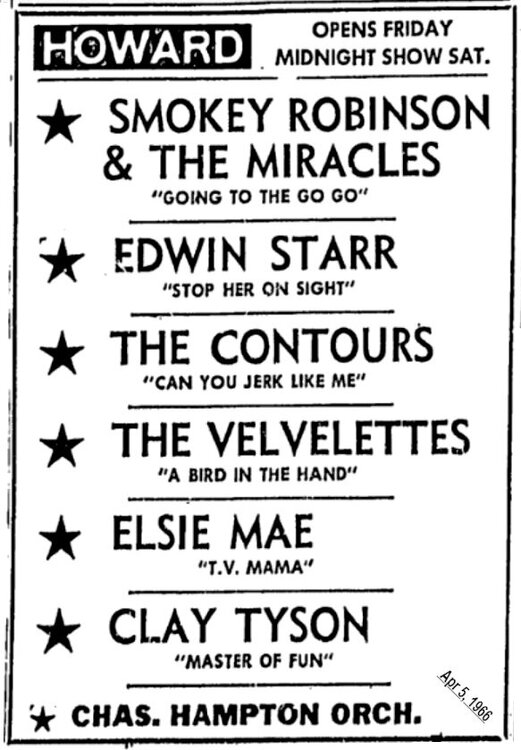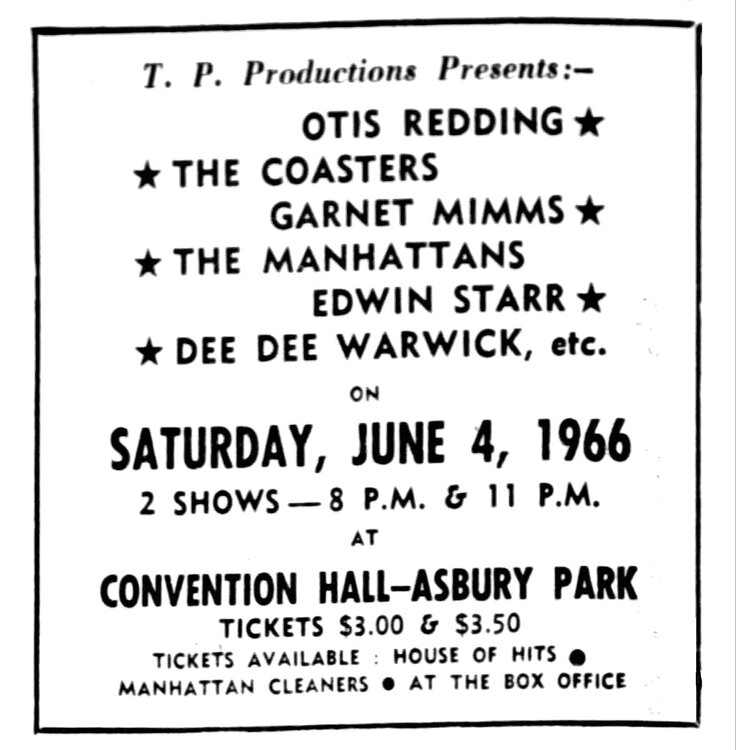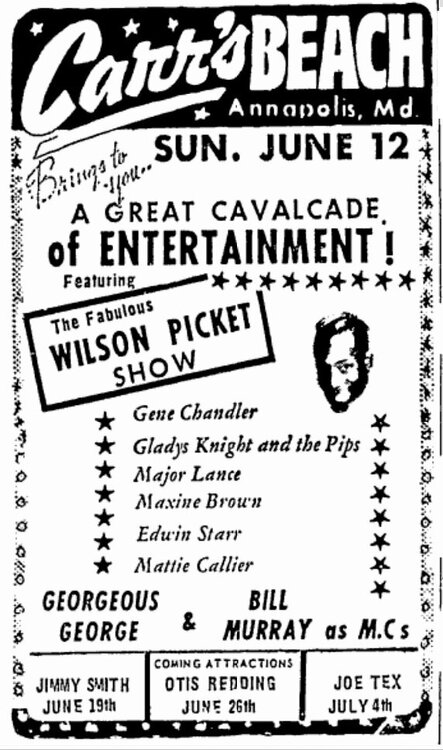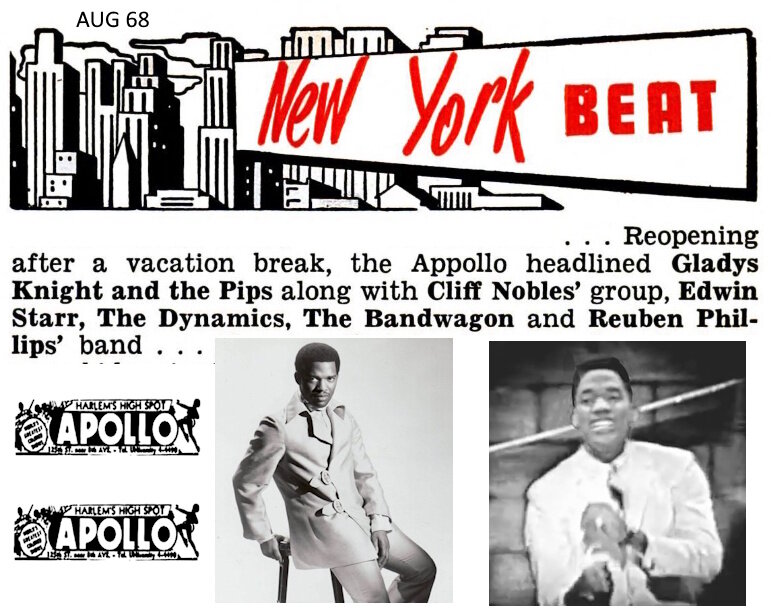-
Posts
7,237 -
Joined
-
Last visited
-
Days Won
45 -
Feedback
0%
Content Type
Forums
Event Guide
News & Articles
Source Guidelines and Help
Gallery
Videos Directory
Source Store
Everything posted by Roburt
-
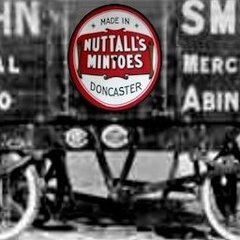
WHAT ARE THE BIGGEST 'MODERN' NIGHTER SOUNDS?
Roburt replied to Paraboliccurve's topic in All About the SOUL
-

WHAT ARE THE BIGGEST 'MODERN' NIGHTER SOUNDS?
Roburt replied to Paraboliccurve's topic in All About the SOUL
Yes, at least for the last 45+ years .... https://www.mixcloud.com/spurs1961/richard-searlings-clifton-halls-rotherham-all-nighter-the-music-the-memories/ -
R.I.P. Snowy; a top Donny soul guy has left the building ... I got to know Snowy when still in Donny in the late 60's. He used to visit my house in Hexthorpe with some of his mates who were soulies / skinheads. This was the period when the Attic Soul Club was transitioning into a skinhead haunt. His mates, mainly, wanted to plunder my ska / reggae collection but Snowy was always more interested in my soul stuff. I got a new (better paid) job, so was able to move to a bigger house in Balby and Snowy was still visiting me even then. He bought many of my 'better' NS 45's off me (having a young family, I no longer went to niters & going to the Torch, Casino was of no interest to me at all). He was a regular in Wigan and knew all the top current sounds. Thus things like my issue of Tobi Legend, my Artistics Okeh demo and many more singles changed hands. I left Donny and others (Paul Temple, etc.) were also soon plundering my collection, but (on & off) I stayed in touch with Snowy. I was living in Worksop when he had his (1st ?) record shop. I recall a tale he told me about an old guy who came into his shop to try to sell a bunch of classical albums. Snowy explained that they were of no value, but thumbed through the pile anyway. He happened on an LP that featured a violin on the cover ... WHY'D YOU GET THIS, IT'S NOT LIKE THE OTHER ALBUMS IN THE PILE ... Ohh, that was a mistake, I saw the violin & thought it was classical music, but it wasn't, I never played it after the 1st time .. needless to say, Snowy bought just that one LP off the guy. R.I.P. Snowy .. Another encounter with Snowy comes to mind. Early 70's -- the place to go to get SOUL SOUNDS 45's back then was Boylans in Conisboro. I went over to get some top Wheel sounds at a decent price & Snowy was in the shop too. He asked what my current 'new' top want was & I told him it was Marvin Smith's new Mayfield Records 45 (so it must have been early 71), he noted my comment and went about his way (I think he'd also bought a few 45's that morning). Snowy was an ever-present about town & on the scene as far back as then.
-
-
Pittsburgh had quite a few good blue-eyed soul singers (Chuck Corby, Jimmy Beaumont, etc.) and up there as one of their best was Johnny Daye. Johnny had 2 x 45 released on Jomada, so he was part of the Pittsburgh / New York connection. However his best outings were on the local Blue Star label (the tracks being cut @ Gateway Studios) and his later efforts for Stax. At Stax, he cut "Stay Baby Stay" ....
-
Gene's version of SOUL SERENADE ... he was recorded playing this live @ the Blue Note Club, New York ... and a clip of Gene & his trio playing live back in 1969 ..
-
Gene Ludwig gets a few mentions in this thread. Here's a run down on his career ... Gene Ludwig was born in Twin Rocks, Pennsylvania on September 4, 1937. Four years later his family moved to Swissvale where Gene spent most of his youth and graduated from Swissvale High in 1955. His mother had Gene take piano lessons from first grade and his musical growth began there. His mother wanted him to become a concert pianist but he soon realized that his musical preference lay in Rhythm & Blues. After a series of early jobs, Gene was ready to make a life long commitment to music. He had spent time listening to musicians like Ramsey Lewis, Horace Silver, Ahmad Jamal and Ray Bryant at The Crawford Grill and the Hi-Hat in Pittsburgh but when he got to see Jimmy Smith for the first time (at the famous Hurricane Lounge) his mind was fully made up. "Around '57 I met Jimmy Smith and heard the Hammond...and I knew that's what I wanted to be: a Hammond organ player". Around 1949 or 1950, he had heard the likes of Bill Doggett's music, but that hadn't tempted him to quit the piano. But when he heard Jimmy Smith playing the Hammond it was so awesome, he was ready to change instruments. Gene's first Jazz Organ Combo was led by tenor saxophonist, Sonny Stanton. They gigged around Pittsburgh & even travelled to Cleveland before Gene made the switch to another quartet led by Gene Barr. This group played further afield (St. Louis, Indianapolis, Philadelphia and Buffalo). Gene's musical change (to an organ) started around 1958 and by 1962, he was playing rooms like the Hurricane Lounge himself. He had first met Jimmy Smith and then he got to see Milt Buckner... he soon got to see Groove Holmes Jimmy McGriff & Jack McDuff... not much later he was playing the same club as them for eight weeks out of the year (with his own trio). This continued from 1962 until the club had to close because of the '68 riots. His group included drummer Randy Gillespie and sometimes Jerry Byrd. The trio first recorded for the local LaVere label (“Gospel Goodness”). Gene got a new manager & this change resulted in even better gigs. One night while playing in Newark, Nesuhi Ertegun from Atlantic Records stopped by to hear Gene's trio and wound up offering them a recording deal. The resulting track, “Sticks and Stones” (1963) got favourable air play in Pittsburgh. An album followed on the Mainstream label titled 'Organ Out Loud' (#6032; 1965) and this also escaped (as 'The Hot Organ') on Time Records. This album included his take on “Coming Home Baby”). In 1966, 'Mother Blues' was released on the Jo-Da label. Another recording of his from this period came out on Travis & Gene was also doing a little work for his own label; Ge-Lu Records ('This is Gene Ludwig', GL-1415). Gene had by then been leading his own trio for some years. Up in New York, Gene had a 45 out on Jocida in 1967. But his trio's guitar player went off with Jack McDuff's group, Gene then hooked up with Wilbert Longmire. Then Wilbert quit the band (he would record in his own right in 69) and Pat Martino replaced him. Gene co-led the group with Pat and they worked up and down the East Coast. But in 1969, Gene got the chance to record with Sonny Stitt. This was the start of a valuable new musical relationship for Gene. Sonny took Gene under his wing and taught him a lot (Gene growing as an organist during that period). Pat Martino decided to leave when Gene started to work with Sonny Stitt. Pat did, however, appear with the group on Sonny Stitt's 'Night Letter' LP (Prestige #7759; 1969). Gene only worked with Sonny Stitt for a year but it was one of the fondest times of my whole career. Returning to Pittsburgh, Gene hooked up with Bill Easley and then Walt Maddox before placing one of his own productions with Steel City Records. Next he went on the road with Arthur Prysock (in 1974 and then again in 1979). During the same period, he'd play support for local groups / vocalists back in Pittsburgh when he was home. Soon after, Gene got to record again. For Muse Records, he cut 'Now's The Time' (MR-5164; 1980) which featured a strong mix of jazz organ grooves (at that time jazz organ tracks were a bit out of favour). His musical career continued & eventually he got to record again, as well as appearing at the Montreaux Jazz Festival in Switzerland. In 2000 his album 'Soul Serenade' was released by Loose Leaf, the title track being his take on the old 60's soul standard tune.
-
Arthur Jenkins (part owner of Jad) wasn't an official member of the Latin Jazz Quintet but he did play on many of their tracks between 1961 & 1965, here's one of them ... "Mambo Bobbie" the album this comes from was reissued in the UK & Japan in the 90's (& twice more since in Japan)
-
Johnny Nash's 2nd UK 45 -- issued here in late 57 or very early 1958 ... it was the HMV single released just ahead of Danny & the Jnr's "At The Hop".
-
More info on one of the other Jad acts ... Joe 'Groundhog' Richardson ... who also had stuff out on other labels (including Turbo, so Steve G might know more about him) ...
-
Phillips & Martin were the guys who wrote the song originally. The song was 're-worded' & used again by Chuck & the Entrees (as using the original backing track & just adding the new vocals was a much cheaper option to cutting a whole new track) -- I'll still ask Chuck who they were though. BTW, Curtis sang with the Arketts too (the group comprising Argie Lyerly, Marian Lyerly and Pat Hendricks) for Ronnie Records ... AND this is Curtis yet again on another expensive Pittsburgh 45 (below) ...
-
Chuck (Corby) has got back to me to say that one of the guys in Curtis & the Showstoppers (Rodney Allen) was with him as a member of his backing group, the Entrees. Rodney now lives in LA. Chuck also knew Gene Ludwig really well.
-
It was Odell Bailey who sent Chuck Corby & his then group (Four Plus One) to Golden World in Detroit to cut the songs Chuck had written -- “Man Loves Two” & “Happy Go Lucky”.
-
What Sir Shambling has to say about Vic & Joe .... no bio info ... but the arranger on their track was Arthur Jenkins, so it must have been cut in New York ... Arthur Jenkins was a jazz based keys player, so he might have brought Gene Ludwig to Jocida. Arthur Jenkins was (later) in the group Cousin Ice that had lots of releases (they cut a house version of "Can I Get A Witness" among other things). https://sirshambling.com/artists_2012/V/vic_joe/index.php
-
A couple of the tracks shown above ...
-
JAD Records was a record label that was co-owned by Johnny Nash, producer Arthur Jenkins, and businessman Danny Sims, whose initials formed its logo. JAD Records Co. Inc. was located 221 West 57th Street, New York, NY 10019. They cut lots of their tracks @ Broadway Recording Studio (1697 Broadway, NY). Johnny Nash had been in the recording biz a long time; his 1st US 45 escaping in 1956, with his 1st UK release following in 1957 (Ladder Of Love on HMV). He went through lots of style changes & had releases on many US labels (ABC, Warners, Groove, Argo, Cadet, Atlantic, MGM, Epic). He first started Joda in 65 with Jad following in 68 (they also used the Jomada & Jocida label names). You'd think with a long musical pedigree, his big hits around the world, his connections in the biz (Lloyd Price, Howard Tate, Kim Weston, Don Covay & many more) + his links with reggae / Bob Marley from 1968, that everything would be known about his career / his recording work. BUT there a large gaps in knowledge right thru his time in the biz -- 1953 thru to 2006. He was born in Houston & initially made his name on a TV show in 1953. He was recording from 1957 and also made a name for himself as an actor. The period I'm focusing on here are his Joda & Jad days; 1965 to 1970. He was working out of New York & (then) Jamaica / New York in that period, collaborating with the likes of Arthur Jenkins, Gerry Thomas (of the Fatback Band) and others. For Jocida, he signed & recorded Pittsburgh based (white) jazz organist Gene Ludwig. How that connection came about I'm totally in the dark about. He also signed better known names to his labels' Lloyd Price, Howard Tate, Kim Weston, Gloria Gaynor, Rosco Gordon, Larry Santos, Johnny Daye, Sam & Bill, Bill Johnson (half of Sam & Bill), the Jamaican artists, etc. But lots of 'unknowns' also had releases on his labels -- Vic & Joe, Joe Richardson (Groundhog), the Jodarettes & the Joda Orchestra (both probably just studio based outfits). Before being signed to Jocida, Gene Ludwig had been a constant on the Pittsburgh club / recording scene (mainly on the jazz side of things. But he must have collaborated with some of the other acts that recorded for the same local labels as himself -- acts such as Curtis & the Showstoppers for instance. Anyone here shed light on some of the lesser known details from this period ?
-

REAL HUMDINGER - EDWIN STARR (WEST GRAND)
Roburt replied to Neil Rushton's topic in All About the SOUL
Seems the Fantastic Four must have been GW's 'go to' group for backing vocals in late 65 / early to mid 66 -- the group's first release in their own right coming out in Aug 66 (Ric Tic #119). They were on background vocals on "Scotts On Swingers" & Chuck Corby told me they were also on background when his group (Four Plus One) cut their Gene Redd / Detroit version of "Man Loves Two" around April / May 66. -
Radio 1 DJ and presenter Andy Peebles dies aged 76 - BBC News https://www.bbc.co.uk/news/articles/cq5zx32163po
-

REAL HUMDINGER - EDWIN STARR (WEST GRAND)
Roburt replied to Neil Rushton's topic in All About the SOUL
DFTMC info on JJ's version of Real Humdinger & Edwin's tracks cut around the same time .... Edwin's "Stop Her On Sight" & JJ's "Real Humdinger" were on the US R&B chart at the same time, "Stop Her On Sight" making that chart a week ahead of JJ's cut. "Stop Her On Sight" looks to have been recorded on 22nd Jan 66, with JJ's "Real Humdinger" being laid down in the studio on 28th Jan. So that would mean Edwin's take on "Real Humdinger" being attempted on the 27th / 28th Jan I guess. So Edwin must have had a gig he needed to catch a plane to on Saturday 29th Jan (the BIG GIG NIGHT of each week always being on Friday & Saturday nights of course). JUST IN PASSING: Edwin had a big seller in the UK with "Headline News", but in the US the track wasn't that successful for him -- peaking @ No.84 pop & not even making the R&B chart. -

REAL HUMDINGER - EDWIN STARR (WEST GRAND)
Roburt replied to Neil Rushton's topic in All About the SOUL
All info about those times helps in a small way to promote the new 45 ... ANY PUBLICITY (discussion) IS GOOD PUBLICITY. -

REAL HUMDINGER - EDWIN STARR (WEST GRAND)
Roburt replied to Neil Rushton's topic in All About the SOUL
A few more Edwin related bits ... "00 Soul" really took off quickly ... it was making enough noise in July 65 for GW to put out a national ad for the 45. Also in July 65 it was a Breakout 45 right across the US (meaning it would get playlisted by most radio stns due to it's status -- even though the track was by an unknown artist on a small Detroit black owned record label). Same month it was a tipped track on quite a few R&B radio stns (in Detroit, Cleveland, Buffalo, New Jersey, Atlanta, Texas, etc.). It made it's entry onto the national R&B charts at the very end of the month ... AND BY ... mid August, Edwin had been added to the acts on a touring revue show (playing the Howard in DC for a week) ... -

Groovettes on Anglo American and record buying in general
Roburt replied to Ssmall's topic in Look At Your Box
This track was masterminded by (Eu)Gene Dozier aka Billy Jackson. Gene had started off in Philly -- there he worked on quite a few sessions and wrote songs with Norman Johnson. A joint effort of theirs became (when separately finished) "Swoop Down On You" and "It Will Be Done". Gene thought the grass would be greener elsewhere & so after introducing himself to Mickey Stevenson backstage @ the Uptown Theatre, headed off to Detroit. There he took on the name of Billy Jackson (who he knew was a 'known name' from Philly at Motown). He worked on sessions for songs such as "Uptight" and wrote some songs himself (the Marvelettes having one of these released on a later LP). But G & Huff came to town & revealed his deception. So he left Motown & went across town to work with Golden World / Solid Hit (for Pat Lewis, Theresa Lindsey tracks, etc). But Gene soon decided to move on again, this time to LA. There he hooked up with a new musical partner (Santifer) & cut the Blossoms "Let Your Love Shine on Me" (October 66 release). He & his partner then met the girls in the Groovettes & took a fancy to them (they were very attractive young ladies). So they cut them on one of Gene's songs "Think It Over Baby" (written back in Detroit under his assumed name Billy Jackson). This was put out on Reness. I met & spent a couple of days with Gene in Vegas in the mid 90's and got the above info direct from him. -

REAL HUMDINGER - EDWIN STARR (WEST GRAND)
Roburt replied to Neil Rushton's topic in All About the SOUL
MORE INFO ON EDWIN'S WORK @ THAT TIME; from an old article of mine + the tinternet ... Detroit DJ LeBaron Taylor introduced Edwin Starr to Ed Wingate and he signed Starr to a recording contract with GW. “Agent Double-O-Soul” was written by Edwin in New York in down time while fronting Bill Doggett's Band around April 65. Edwin went to see the current James Bond movie, watching it through 3 times and was inspired to pen the song. The track was produced by Richard Parker at GW and arranged by both Starr and Sonny Sanders. Released in the summer of 1965, as the anticipation for the new James Bond movie, Thunderball, was starting to build. Starr’s debut single went all the way to # 8 on the Billboard R&B chart and reached # 21 on the Hot 100. The session for “Agent Double-O-Soul” was the first for future Funk Brother bassist Bob Babbitt. The fact that he was a classically trained musician came in handy when he was asked to read the introduction, which had been written out note for note by arranger Sonny Sanders. “If I hadn’t been able to read that, I don’t think they would have called me back”, Babbitt stated. “All of a sudden they were calling me about everything over there.” Babbitt’s distinctive bass line was a major factor in the single’s success. With an instant solo hit on his hands (Double-O-Soul), Edwin had to immediately put together a backing band so that he could tour to cash in on his new found success. He didn’t really know too many available musicians in Detroit, so it was only natural that he went back to Cleveland (where he'd started his musical career) to recruit the backbone of his needed line-up. While scouting out members for his tour band, he sought out lots of his old friends from his days in Cleveland. In no time at all he had persuaded Gus Hawkins and Julius Robertson to go on the road with him. The pair stayed with him for some time before they eventually tired of living out of a suitcase and returned home to Cleveland. Starr also wrote his follow-up single song, “Back Street”, released in December of 1965. “Back Street” celebrated partying on the other side of the tracks. “That was pretty much a musical anthology of my life, the way I lived and how I lived and everything”, Starr said. “Back Street” was not as successful as “Agent Double-O-Soul”, however, as it peaked at # 33 on the R&B chart and only reached # 95 on the Hot 100. Ed Wingate used Motown’s Funk Brothers on Starr’s recordings. Berry Gordy fined any of the Funk Brothers that he caught moonlighting but that didn’t stop the practice from continuing. Both bassist James Jamerson and guitarist Dennis Coffey played on Starr’s next record, “Stop Her On Sight (S.O.S.)”. Edwin stated "a guy named Richard Morris helped with “Stop Her On Sight”. The whole idea of the song came from the television program 20,000 Leagues Under the Sea. I was watching that, and they did the Morse code thing on the TV show. And that’s where I got the intro for the record.” “Stop Her On Sight (S.O.S.)” was a Top Ten R&B hit, but it failed to make the Top 40 on Billboard’s Hot 100, peaking at # 48 in early 1966. FROM THE ABOVE, it seems very likely that some of the Funk Brothers played on the session that produced the backing track for REAL HUMDINGER. -

REAL HUMDINGER - EDWIN STARR (WEST GRAND)
Roburt replied to Neil Rushton's topic in All About the SOUL
A few ads for / reports of Edwin's live shows back in the 60's ... 1st one in Detroit when he was still fronting Bill Doggett's Band (this is when he approached GW with his James Bond inspired song -- May 65) .... "00 Soul" hit big quickly & it seems he was added to a touring review for their final shows which were @ the Apollo (Aug 65) ... . . . then some 1966 (& later stuff) ... a US review tour he was on with Motown acts (which hit the Howard in DC in April 66), 2 shows in June 66 (one @ Carr's Beach) and then more assorted stuff including details of some of his UK gigs in 66. Edwin's 1st ever UK live show took place @ the Mojo in Sheffield, so the one shown below (Mojo: 13th Aug 66) must have been his 2nd appearance @ the club. -

REAL HUMDINGER - EDWIN STARR (WEST GRAND)
Roburt replied to Neil Rushton's topic in All About the SOUL
Yes, got my releases mixed up, it was "Stop Her On Sight" that came out in January & was charting R&B wise in Feb 66. Theconcertdatabase listings contain extensive info on who was appearing @ the 20 Grand in Detroit from the 50's through the 60's. But for Edwin their 1st 2 entries are ... Christmas Carnival 12/26/1965 @ IMA Auditorium, Flint, Michigan . . . . AND The Swingin' Time Review 07/20/1966 Fox Theatre, Detroit, Michigan .... so no info on the shows he undertook from Xmas 65 thru July 66. I know there's an on-line data base that lists the recording dates for all Motown tracks; does that extend to Ric Tic / GW stuff (such as Edwin's recordings) that became Motown's after the take over by BG ?




